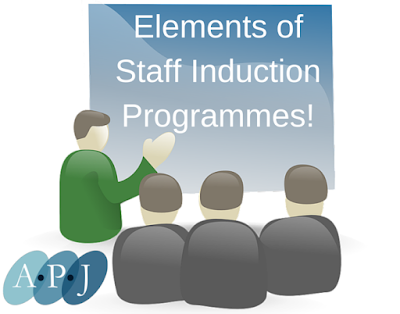One of the toughest balances to achieve within any business is between building a culture that gives people the autonomy to get on with their job while maintaining an environment of accountability.
There is a fine line between managing and micromanaging and it tends to be quite subjective. Some team members will welcome day to day management and guidance while others might rather be left alone to get on with their job. As such, it is necessary to create systems and processes which allow the management team to maintain awareness of what is going on across the business without people feeling like someone is constantly checking on them.
Everyone in the firm should have annual goals which align with the overall objectives of the firm and are communicated to everyone across the business at the start of the year. Each individual should then be tasked with agreeing what their personal goals should be with their manager. These should cascade down from the overall objectives of the business. Ideally you should aim to agree between five and eight goals for each team member.
Once everyone’s objectives have been set, you and your management team should set up quarterly meetings with each of your staff to discuss progress towards achieving each objective. You should let your team member lead the meeting, explaining the progress they have made towards each goal and what they intend to do in the next quarter in order to keep moving forward. As a manager you should ask open questions such as “What went well? Which areas could be improved upon?” or “Do you need any additional resources in order to achieve your goals?” This will provide the opportunity to assist the individual towards successfully achieving their goals but in a way that doesn’t feel like they are being micro managed.
Finally, each team in your business should have a weekly meeting with an agenda designed to allow everyone to update what happened last week and what is planned for the next week. This provides an opportunity for managers / team leaders to drive objectives forward. In order to encourage accountability, at each weekly meeting, every team member should be required to give a 3-minute update on where they are against their objectives.
In order to make this approach work, the managers in your firm should be accountable for the objectives and their teams should be responsible for delivering them. In order to communicate progress across the business and increase transparency, each manager should produce a quarterly update, which can be shared across the firm. This could take the form of a simple email to all staff. This type of communication also allows the managers to outline what is coming up in the next quarter and solicit help / resources if required.
There is a fine line between managing and micromanaging and it tends to be quite subjective. Some team members will welcome day to day management and guidance while others might rather be left alone to get on with their job. As such, it is necessary to create systems and processes which allow the management team to maintain awareness of what is going on across the business without people feeling like someone is constantly checking on them.
Everyone in the firm should have annual goals which align with the overall objectives of the firm and are communicated to everyone across the business at the start of the year. Each individual should then be tasked with agreeing what their personal goals should be with their manager. These should cascade down from the overall objectives of the business. Ideally you should aim to agree between five and eight goals for each team member.
Once everyone’s objectives have been set, you and your management team should set up quarterly meetings with each of your staff to discuss progress towards achieving each objective. You should let your team member lead the meeting, explaining the progress they have made towards each goal and what they intend to do in the next quarter in order to keep moving forward. As a manager you should ask open questions such as “What went well? Which areas could be improved upon?” or “Do you need any additional resources in order to achieve your goals?” This will provide the opportunity to assist the individual towards successfully achieving their goals but in a way that doesn’t feel like they are being micro managed.
Finally, each team in your business should have a weekly meeting with an agenda designed to allow everyone to update what happened last week and what is planned for the next week. This provides an opportunity for managers / team leaders to drive objectives forward. In order to encourage accountability, at each weekly meeting, every team member should be required to give a 3-minute update on where they are against their objectives.
In order to make this approach work, the managers in your firm should be accountable for the objectives and their teams should be responsible for delivering them. In order to communicate progress across the business and increase transparency, each manager should produce a quarterly update, which can be shared across the firm. This could take the form of a simple email to all staff. This type of communication also allows the managers to outline what is coming up in the next quarter and solicit help / resources if required.















